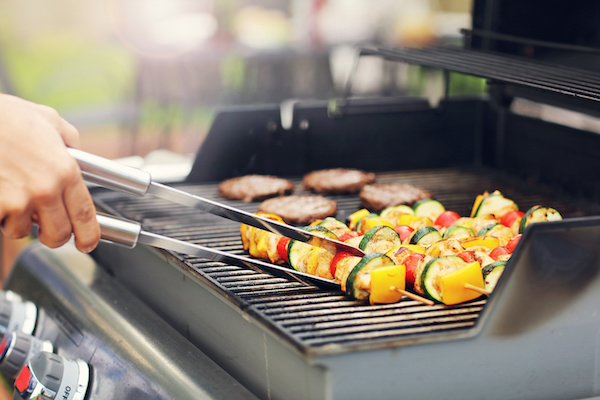It’s going to be a big weekend for eating outdoors. No matter what you’re preparing or scarfing down, you certainly don’t want it to be something that might make someone sick.
Here are some simple tips and strategies for handling and storing food from registered dietitian Eileen Molloy courtesy of the Maine Academy of Nutrition & Dietetics. We want the fun to keep going on before and after your picnic, barbecue, or camping trip.
Cool it!
You have likely heard it by now, but it is very important to keep cold foods cold (and hot foods hot) in order to prevent food poisoning. This really applies to perishable foods such as meats, chicken, cheese, milk products, eggs, and salads made from them. Keep them in a cooler on ample ice (use freezer gel packs, on top of the food) until serving or cooking time.
Definitely, avoid putting hot foods or hot leftovers into the cooler with the cold foods because it will increase the temperature in the cooler and put everything into the “danger zone”— the temperature range between 40°- 140° degrees, at which bacteria that is naturally present in some foods begin to multiply rapidly.
Cold foods should stay below 40° degrees and hot foods above 140° degrees. To help keep cold foods cold longer, keep your beverages in a separate cooler (this will result in less frequent opening of the cooler) and also make it easier to find things.
Separate is best
Avoiding cross contamination is crucial for food safety. Bacteria can spread quickly and easily when food and food juices mix.
You’ve started with separate coolers for beverages and cold foods. Also, make sure to keep all raw meats wrapped completely (or put in doubled-up, sealable plastic food storage bags so they can’t drip on other foods).
You can keep fruit or vegetables in plastic zip-top bags as well. Not only does this prevent them from coming in contact with any raw meats, but it also keeps them safe from bruising and falling into the melting ice in the bottom of your cooler. Consider using plastic storage containers for small items like dips, salsa, pickles, etc.
Finally, think through the cooking and serving process to avoid having raw meats and their juices touch the final, cooked foods. This means having a separate platter for the cooked meats, separate serving utensils for raw and cooked foods (including tongs and forks used for grilling) and plenty of plastic wrap or clean food storage bags for leftovers. Do NOT use the same bags you used to bring the raw meat and chicken!
Keep leftovers safe
If you have leftover food at the picnic or BBQ, the worst thing you can do is let potentially dangerous foods (meats, milk, cheese, eggs, etc) sit out after the meal for grazing throughout the day. In fact, if the weather is hot (above 90°—not that likely for Maine), you only have an hour that the food can safely be outside of the 40°-140 range (two hours if the outside temp is lower).
You can help hot foods stay hot by wrapping them tightly and putting them in their own insulated container when bringing them to the picnic and afterward, wrap all leftovers and put them into the cooler with the ice and gel packs so you can quickly cool down the hot food, taking it out of the danger zone.
There are many websites to help you learn even more about this topic. One is the FDA’s site for summer food safety. Enjoy the warm weather while it lasts and keep everyone happy with delicious, healthy food that is safe to eat!
And if you’re planning to set off some fireworks, make sure to check out the laws in your community. They vary.


Leave A Comment